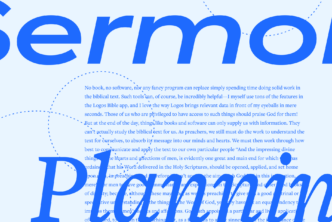Read the first post in this series…
An example of the disclosure form is found in 1Th 4.13:
1Th 4.13, Disclosure Form
Description of Form
Smith provides a concise summary of the structure of the disclosure form as identified by Mullins:
Mullins has isolated the disclosure form, as a distinct literary form which is used in the NT. He examined the form in terms of structure first. By doing so he observes that this form has four constituent elements: verb of wishing, infinitive of a noetic verb, person addressed and information disclosed. Next he examined the form in terms of content and observed that the verb of wishing is typically θέλω, the infinitive of a noetic verb used is typically γινώσκειν (the tense varies) or ἀγνοεῖν, the person addressed is either second person singular or plural and the content of the information disclosed is diverse and usually found within a ὅτι clause.[1]
White discusses the form briefly in his article:
This form may be delineated in terms of its three principal elements: (i) the verb of disclosure, often a two-membered unit consisting of a verb of desiring (θέλω or βούλομαι) in the first person indicative, and the verb of knowing (γινώσκω) in the infinitive form; (ii) the vocative of address (ἀδελφοί, “brothers,” in the five examples from Paul); and (iii) the subject to be disclosed introduced by ὅτι.[2]
The common points of these descriptions include:
- verb of wishing/desiring
- verb of knowing, in the infinitive mood
- a ὅτι or ἵνα clause further explicating the subject to be disclosed.
Smith reports Mullins determines the following references as containing instances of the disclosure formula: Ro 1.13; 11.25; 1Co 10.1; 11.3; 12.1; 2Co 1.8; Col 2.1; 1Th 4.13.[3] Because the third item (ὅτι or ἵνα clause) is variable as Mullins’ reported instances demonstrate, candidate instances of the disclosure formula can be located simply taking the first two items into account.
The Form in OpenText.org SAGNT
Locating the disclosure form in the OpenText.org SAGNT involves searching for clauses that contain a Predicator with θέλω and that also contain an embedded clause (infinives are typically encoded as embedded clauses) with lexical forms of either αγνοεω or οιδα.[4] Below is the query that will find Smith and Mullins’ reported instances.[5]
Structure of the Disclosure Form
Search results in Logos Bible Software are presented in both Greek and English, with respective structures highlighted in each language. In this particular search, the silver background represents the content of the clause; the orange represents each clause component.
Syntax Search Results — Disclosure Form Instances
Bibliography
Mullins, T. Y., “Disclosure: a Literary Form in the New Testament”, NovT 7 (1964), pp. 44-50.
White, J.L., “Introductory Formulae in the Body of the Pauline Letter”, JBL 90 (1971), pp. 91-97.
Smith, C.A., Timothy’s Task, Paul’s Prospect: A New Reading of 2 Timothy (Sheffield: Sheffield Phoenix Press, 2006). pp. 10,
Endnotes
[1] Smith, 10.
[2] White, 93.
[3] Smith, 11.
[4] Andrew Pitts, in a forthcoming review of Logos Bible Software 3.0 to be published in the Journal of Greco-Roman Judaism and Christianity, uses a similar search with similar results as an example of the capability of the OpenText.org SAGNT.
[5] As of November, 2006, this is not strictly true. 1Co 12.1 is erroneously tagged in the current version of the OpenText.org SAGNT. This error has been flagged for correction and should be updated in a future release of the database.







